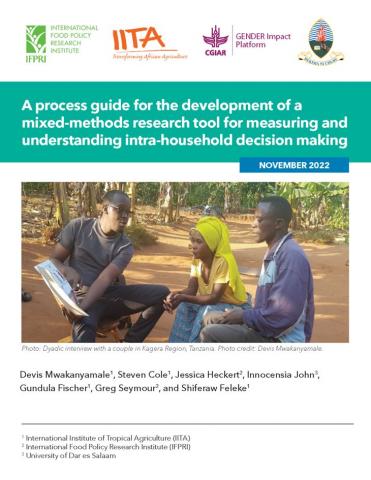A process guide for the development of a mixed-methods research tool for measuring and understanding intra-household decision making
Abstract
Numerous approaches have been developed by researchers for measuring intra-household decision-making. Most use quantitative surveys that often rely on a standard set of questions that inquire about who contributes to key household decisions or women’s abilities to participate in these decisions. Such questions have been criticized for focusing too much on the identity of the decision maker and less on understanding why and how decisions get made within the household and on the multiple facets of women’s roles in decision-making processes. To address the shortcomings of current approaches, we (an interdisciplinary group of applied gender and agriculture researchers) developed a transdisciplinary and mixed-methods approach that can be adapted across livelihoods and geographies to measure intra-household decision making and shed light on the “who,” “why,” and “how” of important household decisions. This guide describes the transdisciplinary process that was used to develop the mixed-methods research tool for understanding and measuring intra-household decision making. In our approach, we focus on measuring who makes which decisions, how, and why and how this influences food, nutrition, and economic security outcomes. This guide, therefore, provides a base for other researchers and development practitioners to develop a context-specific mixed-methods tool for understanding and measuring intra-household decision making.

